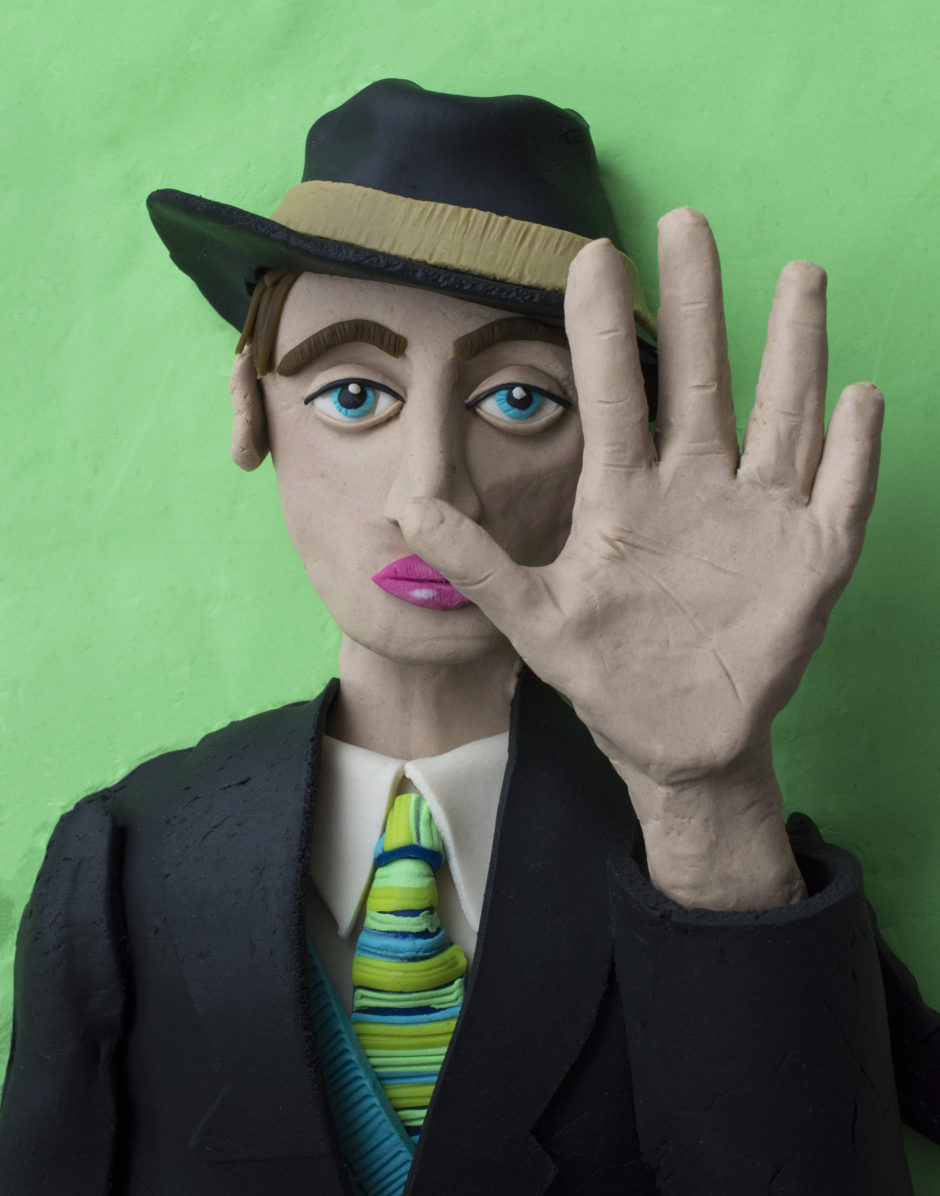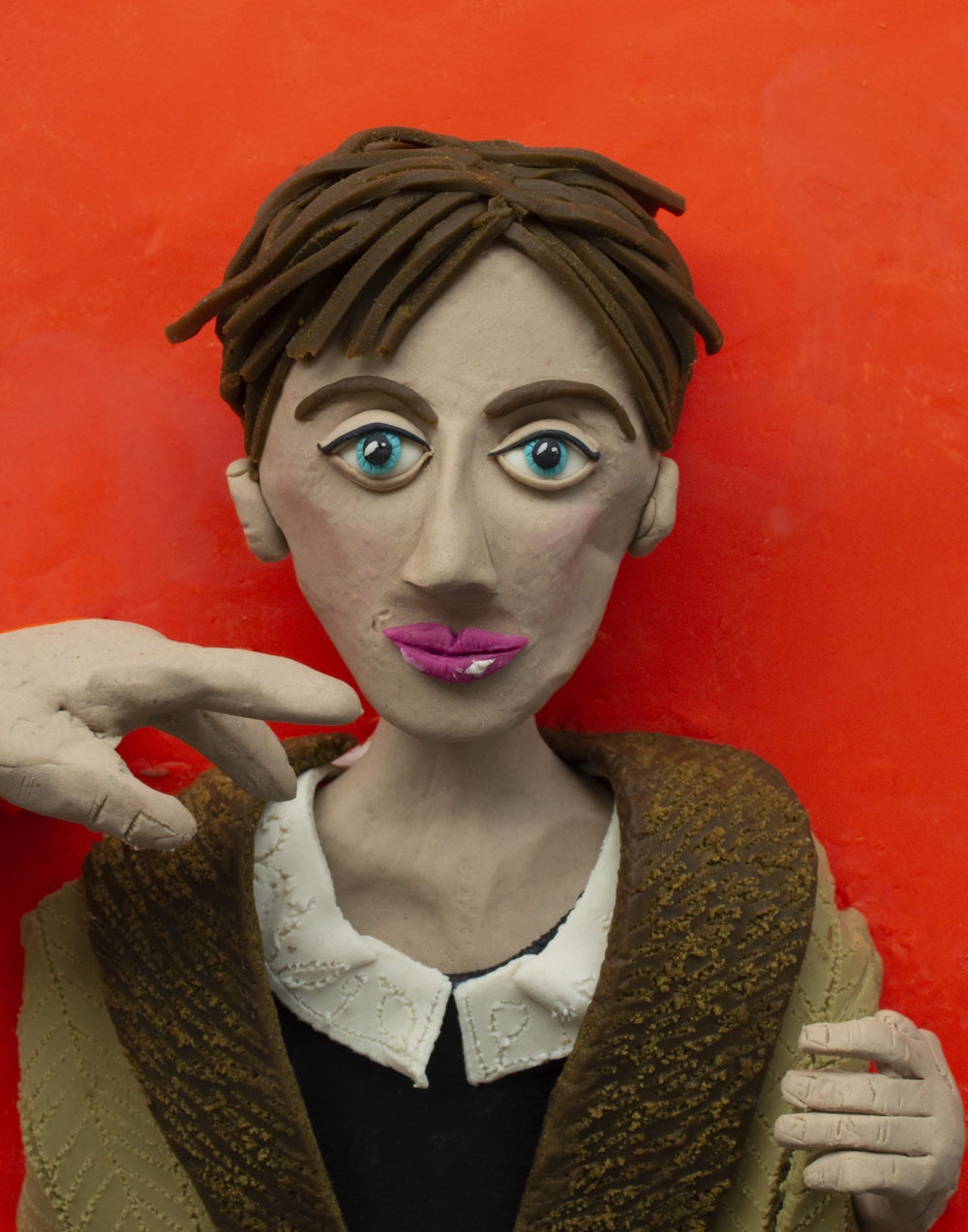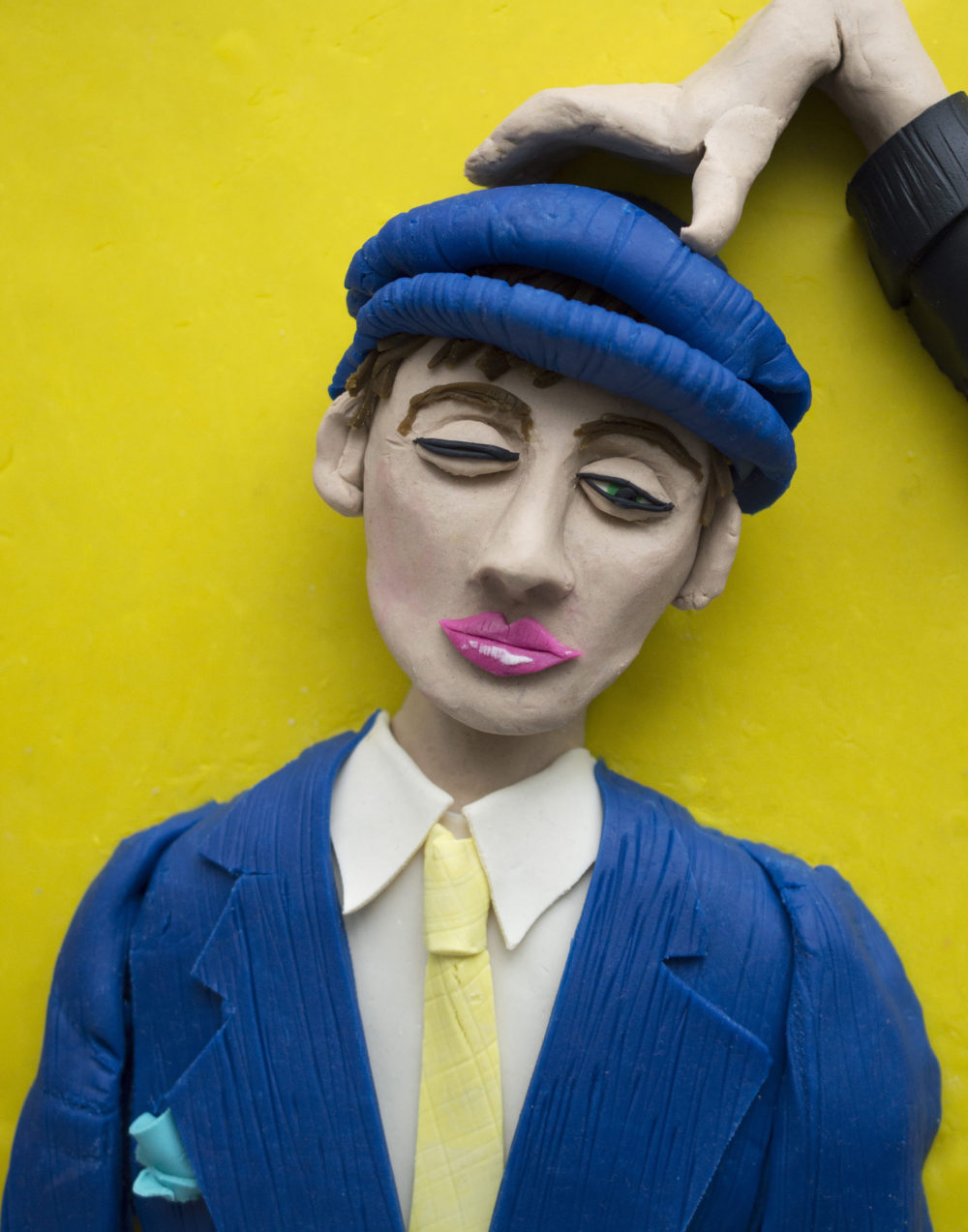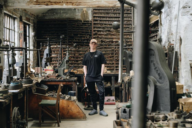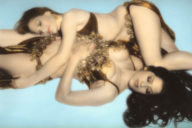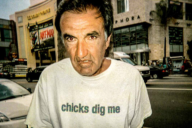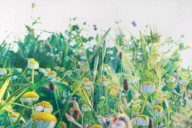SURREALISTS RENDERED IN PLAY-DOH
The artist Eleanor Macnair can often be found rolling out Play-Doh with an empty bottle of wine. She is a master of the medium, in fact. Her use of the lurid children’s modelling material to recreate images from photographic history, then captured her own camera, has earned her a global online following.
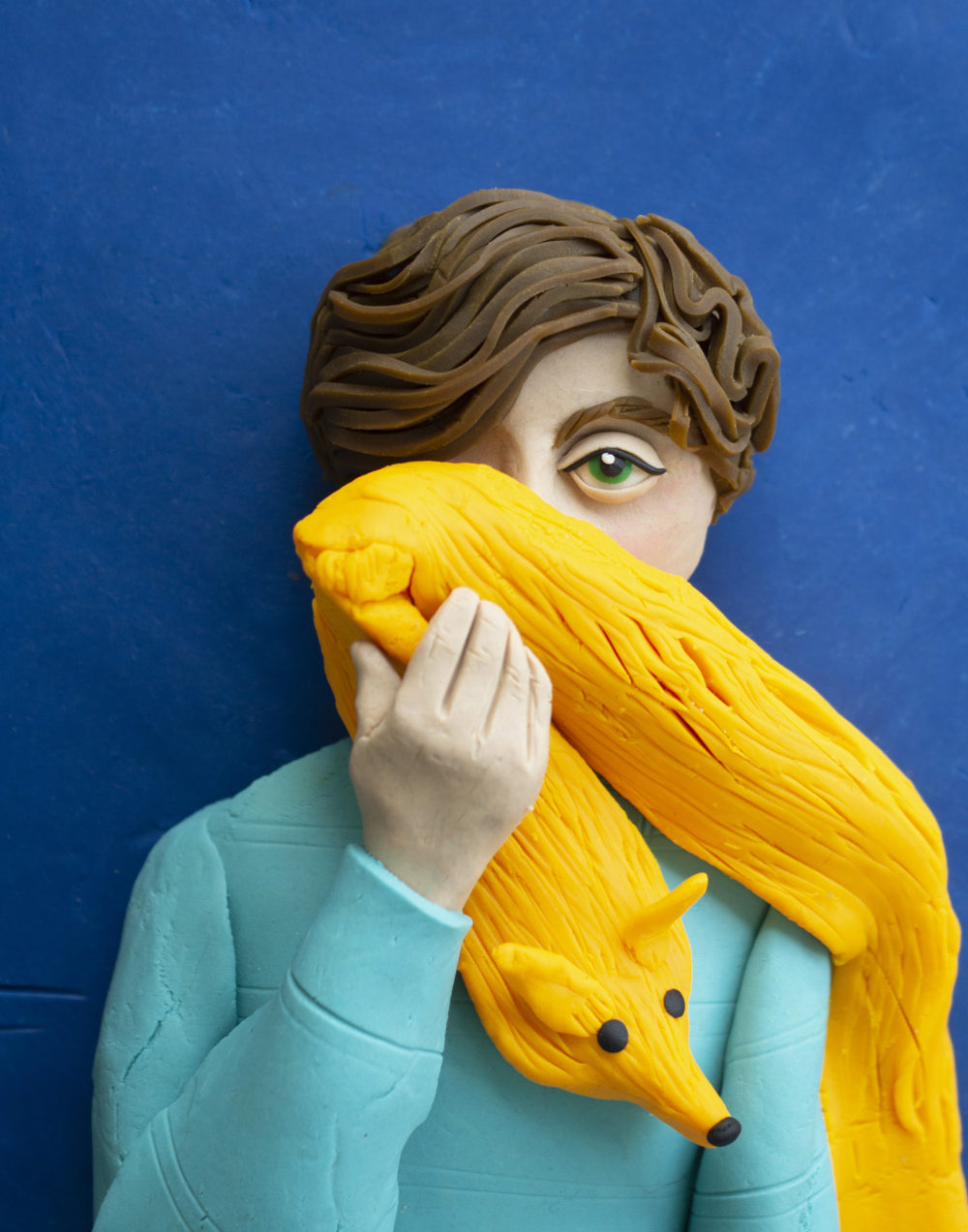
Original photograph: Suzanne Muzard, self-portrait in photomaton, c 1929 rendered in Play-Doh © Eleanor Macnair
Despite being an Instagram sensation, her studio is still the living room of her one-bedroom Peckham flat, where the magic happens on an old Ikea trestle table.
While growing up in Nottingham she gave up art school at 14 and still avoids self-labelling as an ‘artist’. ‘It’s just something I do,’ she says.
If photographs can condense complex ideas and present them in a straightforward visual language, this takes it a step further. The Play-Doh reproductions pare them down to almost nothing, just form and colour.
Since she began in 2013, she’s been inspired by the images of renowned photographers like Cindy Sherman, Alfred Steilglitz and Diane Arbus. It is a way of bringing photography to a wide audience, aided effortlessly by the democracy of the internet.
Her latest series, Surrealists Rendered in Play-Doh, goes on display from November 22nd in the Elephant West gallery, London. The large-scale ‘portraits’ feature iconic Surrealist artists of the 20th century.
The photography they’re based on are the results of coin-operated photo booth (the ‘Photomaton’), installed in Paris in the late 1920s, most enthusiastically used by the Surrealists about town – Salvador Dali, André Breton and Jacques André among them. Artistic greats, a photo booth (and no doubt a few bottles of wine), and photographic history was made.
Eleanor describes her work as ‘like a Chinese whisper’: the original subject of the photograph, the photographer’s print, a digital file online, a Play-Doh model, Eleanor’s photograph and now the works on a gallery wall. We’re left to ask, what is lost and what remains?
This collection was inspired by the 1920s Paris photo booth Surrealists – how did you come across this story and why did it drive you to recreate/reimagine the images?
I’m not too sure how I got my first gallery job and I remember thinking I would be found out for not knowing anything about the history of art nor photography – an imposter! The photography gallery I was working for had just taken some of these Photomaton portraits to Art Basel [the international contemporary art show and fair] and I remember learning about them and being intrigued.
These massive art world figures were just messing around in a photobooth in Paris 90 years ago. It’s a fun and accessible concept – but if you dig deeper it linked to ideas around surrealism. Reading about and understanding the ideas behind the portraits made me think that maybe I could get away with the job. It was all about ideas.
Are you aiming to evoke something in particular in the viewer?
No, I just make the images and then usually throw them out into the world. I see my works as a bridge between the viewer and the original work that they may not have otherwise known about – maybe a few hundred more people will know about these Photomaton portraits after this project and to me, that is a job well done. The Play-Doh is lurid and bright and so helps to compete for attention amongst the thousands of images we all view every day on our phones, in print media, on televisions and the side of buses. The project encourages viewers to slow down and to re-engage with familiar works as well as discover unfamiliar ones.
How long have you been working on this series?
I saw a few of the Photomatons at the Pompidou in Paris a few years later and felt they were following me around. When Elephant West approached me about their Surrealism season, remaking a selection of these Photomaton portraits in Play-Doh just seemed to be a natural fit. I made my first Photomaton portrait, the Jacque Andre Breton in 2017 and then began working on the others earlier this year when I started the conversation with Elephant West.
How did you enter the art world?
I studied English at university and didn’t even enter an art gallery until I was 21. I ended up working in arts PR, then went on to work in the press departments of galleries, museums and publishers. The Play-Doh project was only ever an experiment, started on a whim following a photographic pub quiz run by artists MacDonald Strand in Brighton. One of the rounds was to remake a famous photograph in Play-Doh, so I stole their idea.
I was interested in how images and photography travelled and spread on the internet and how we judge art. I began remaking a few photographs in Play-Doh and posting them on Tumblr. So my entry to the art world was unintentional and unorthodox. As I don’t have an art background it’s important to me to try to make art accessible outside of the traditional gallery space, to say it is for everyone – and this project is my strange attempt to do this.
What’s your process?
I get out my tools (chopping board, wine bottle as a rolling pin, exacto knife, glass of water and a cloth), put a jpg of the image I’m going to recreate on my laptop, put on a podcast and get going. No drawing or prep work, it’s done in a few hours. When the images are blown up to a bigger scale than the model, you can see imperfections like my fingerprints. It’s very amateur and I’m keen to keep it that way. I think perhaps people can relate to the models more because they are imperfect.
How much Play-Doh do you get through?
The size of my models is dictated by the size of the plastic chopping board I got from Khan’s Bargain shop up the road from my flat. Probably a random thing to dictate the size of your art, but it seems to work. For the background colour I use around 5 to 6 pots and, with the different colours, there are perhaps up to 10 pots in each image. As the models are always taken apart though and the Play-Doh returned to the pots I’ve been using some of it for six years, so I don’t need to buy much Play-Doh often. The financial risks of the project have always been minimal – otherwise I don’t think I’d have every got going with it.
How do you feel dismantling old artworks to make new ones?
I’ve always dismantled the artworks as soon as I have shot them, so they never last for more than a day or so. It’s always been a disposable art project and I think it would feel self-indulgent to keep them. Play-Doh cracks and dries really quickly so it would not be possible to keep them for more than a day or so anyway. On a practical level, I would have no room in my flat.
What are the challenges of using Play-Doh?
Often the pictures go wrong, and if I have to abandon a model then that is 4-6 wasted hours. This can be frustrating but worse things happen at sea, as they say. Play-Doh is actually quite difficult to work with. It’s very, very soft so you really have to be careful to handle it as little as possible. It originally started off as wallpaper cleaner and it picks up all the dirt and fluff, so you have to be careful not to be wearing a furry wool jumper. The biggest challenge though is how fast you have to work with the Play-Doh starting to dry out in just a few hours. You can’t sit and mull over a model for days.
What do people make of your work, has anyone’s opinion surprised you?
I think people are often bemused by it.. but then so am I. I feel like I have a double life, a very ordinary life where I take out the bins and things, and then this online, Play-Doh life. Often strangers contact me on Instagram expecting I have a studio and assistants and I’m rich from Play-Doh wealth.
Do you have a favourite image from the Surrealists series?
The Boiffard image has been around a few years now and is one of my favourites. He just looks so debonair. I’m sure some people won’t like it because he is smoking.. but you can’t airbrush history.
The Salvador Dali portrait is probably my other favourite from the series. The hard part of the models is usually getting the expression right through the eyes, so with eyes closed it’s a different matter. I think I’ve managed to make him appear calm and reflective – which must have been hard for him to achieve in a busy photo booth in an amusement park.
Siobhan Warwicker

